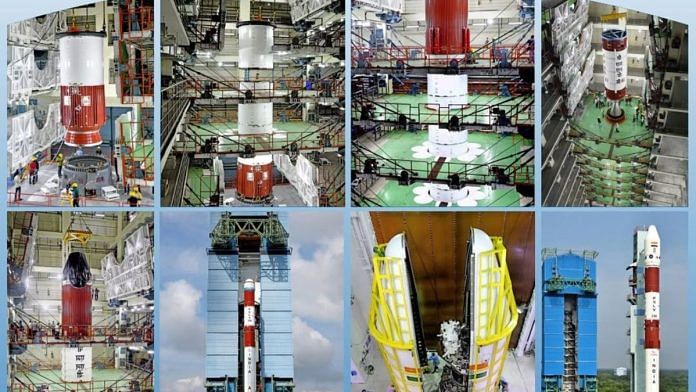Bengaluru: The Indian Space Research Organisation (ISRO) successfully launched its technology demonstrator Space Docking Experiment (SpaDeX) mission onboard a Polar Satellite Launch Vehicle (PSLV) at 10.15 pm (IST) Monday.
Flying on the PSLV-C60 mission, SpaDeX will be used by ISRO to test technologies related to rendezvous, docking and undocking of spacecraft in low-Earth orbit. In aerospace technology, rendezvous is the process of bringing two spacecraft together, and docking refers to their subsequent meeting, and eventual joining and locking in space.
The SpaDeX mission consists of two satellites—Chaser and Target—which were launched together but will be injected independently into a 470-km orbit.
Secondary objectives of the mission include demonstration of electric power transfer between docked spacecraft; composite spacecraft control, which refers to a combination of techniques used to control a spacecraft’s attitude (orientation in space relative to a reference frame), trajectory and other aspects; and successful operation of payloads after undocking.
Demonstrating electric power transfer between spacecraft in space can be essential for future applications such as in-space robotics.
The satellites are also expected to perform robotic arm operations and formation flying, an aviation technique in which two or more aircraft fly and manoeuvre in a predetermined, synchronised and disciplined manner.
Payloads include a high resolution camera on Chaser which will capture the process of rendezvous, docking and undocking, while Target carries a spectrometer (a scientific instrument used to measure interaction of light with a sample) for vegetation monitoring, as well as a radiation monitor that will measure radiation doses spacecraft are exposed to.
While the Rs 130-crore mission was launched by ISRO and its affiliated centres, the assembly, integration and testing of the satellites were performed by Telangana-based aerospace manufacturer Ananth Technologies.
Bharatiya Docking System
Chaser (SDX01) and Target (SDX02) weigh 220 kg each. After being injected into two different locations, they will orient themselves to be in the same orbit with a distance of 20 km between them. Before docking, Chaser will accelerate towards Target by covering decreasing distances in the order of 5 km, 1.5 km, 500 m, 225 m, 15 m, and 3 m.
The process is expected to take about 24 hours.
Once docked, electric flow will be established between the two, linking them. This system, named the Bharatiya Docking System, is modeled after NASA’s docking technology.
The test is part of India’s upcoming space station Bharatiya Antariksha Station—which will utilise docking technology—and human spaceflight mission Gaganyaan, scheduled for launch no earlier than 2026.
Applications for future space missions
Successful docking of Chaser and Target will mark a significant milestone for ISRO in space technology and engineering. This is because the SpaDeX docking process must overcome multiple challenges, which include the small and light satellites performing highly precise manoeuvres at miniature points of contact.
If the mission is successful, the learnings are expected to be helpful for precision manoeuvring of extremely large vehicles such as human spaceflight capsules as part of Gaganyaan.
Autonomous docking also is expected to be used in ISRO’s upcoming lunar missions, which will include sample collection from the surface of the Moon, and then docking back to a spacecraft in orbit before heading to Earth.
A successful docking demonstration will add India to the small list of those that have successfully performed docking in space—the US, Russia, the European Union and China.
This is an updated version of the report
(Edited by Radifah Kabir)
Also Read: 2024 Physics Nobel for AI scientists. How they pioneered machine learning modelled on human brain






